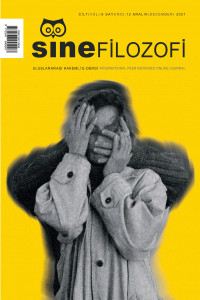Suyun Sesi Filminde Posthümanist Perspektiften Öteki-Oluş
Becoming-Other From the Posthumanist Perspective in The Shape of Water Movie
Author(s): Duygu Ergün TakanSubject(s): Philosophy, Gender Studies, Political economy, Film / Cinema / Cinematography, Sociology of Art
Published by: Serdar Öztürk
Keywords: Posthumanism; becoming-other; becoming-animal; biopolitics; cinema;
Summary/Abstract: Becoming-other addresses non-human entities in post-humanist perspective. Forms of nonhuman entities feed on antihumanism. Much as the concept of humanism which rises together with the thought of enlightenment and centralizes person looks like an expression of affirmation related with being a human, actually it could not go beyond being a unilateral and discriminatory pyramid of life where humans are at the top and all the rest –animals, plants, technology, ecology– are underneath humans with the purpose of serving to them. On a universal scale, post-humanist thought is interpreted as an alternative means which helps us rethink basic principles of our interactions with human and nonhuman actors. The movie The Shape of water (Guillermo del Toro, 2017) is shaped around an amphibian found in Amazon River during Cold War in 1962. There is speculation in the film about what the creature is, which is easier to express by what it is not. The creature in the movie is not a human-being. It cannot be said that it is an animal either. However, it is possible to say that it is the object of a biopolitical purpose. In this case, one can speak of a half-human half-machine hybrid creature. For not being able to explain with a clear expression and considering the view that aforesaid creature represents otherness, it was aimed in the article to criticize humankind who is in the basis of all kinds of alienation and make an anthropocentric reading. In this sense, first the term being and then becoming-other were explained, later the concept of posthumanism and types of post-humanist being were mentioned. Finally, since the movie expresses biopolitical interventions towards the amphibian, it was analysed with the method of content analysis, specific to the concepts of species discrimination and becoming-animal.
Journal: SineFilozofi
- Issue Year: 6/2021
- Issue No: 12
- Page Range: 1116-1130
- Page Count: 15
- Language: Turkish

